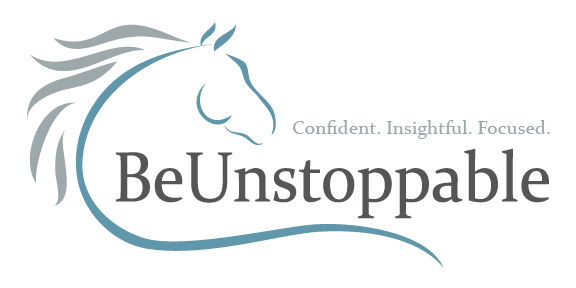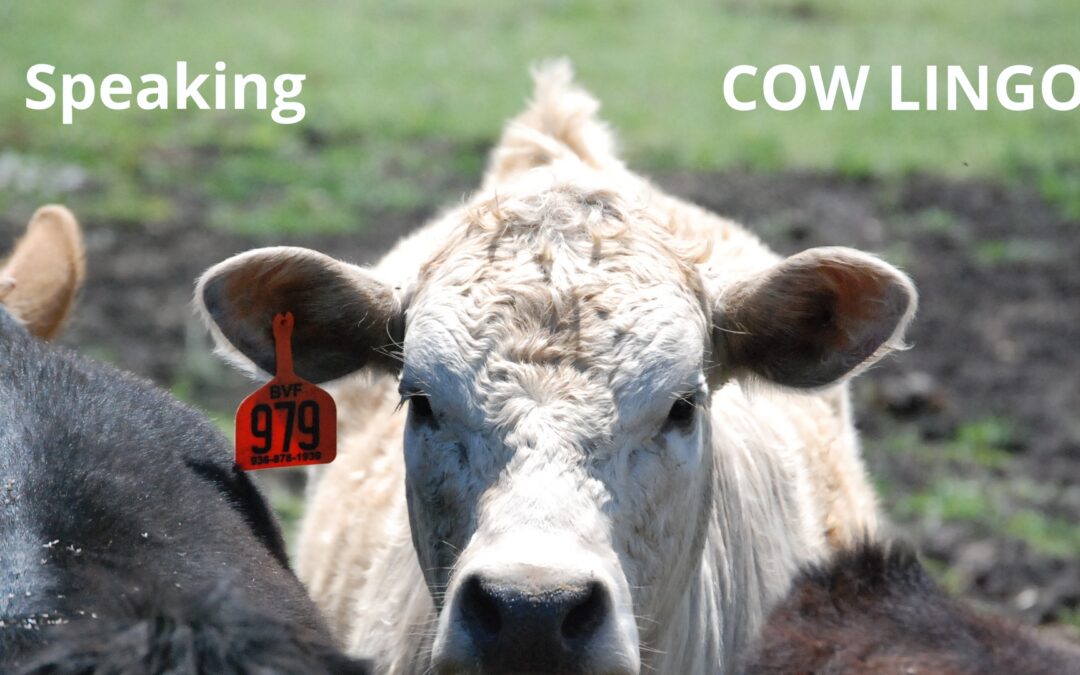

LET US KNOW YOUR THOUGHTS
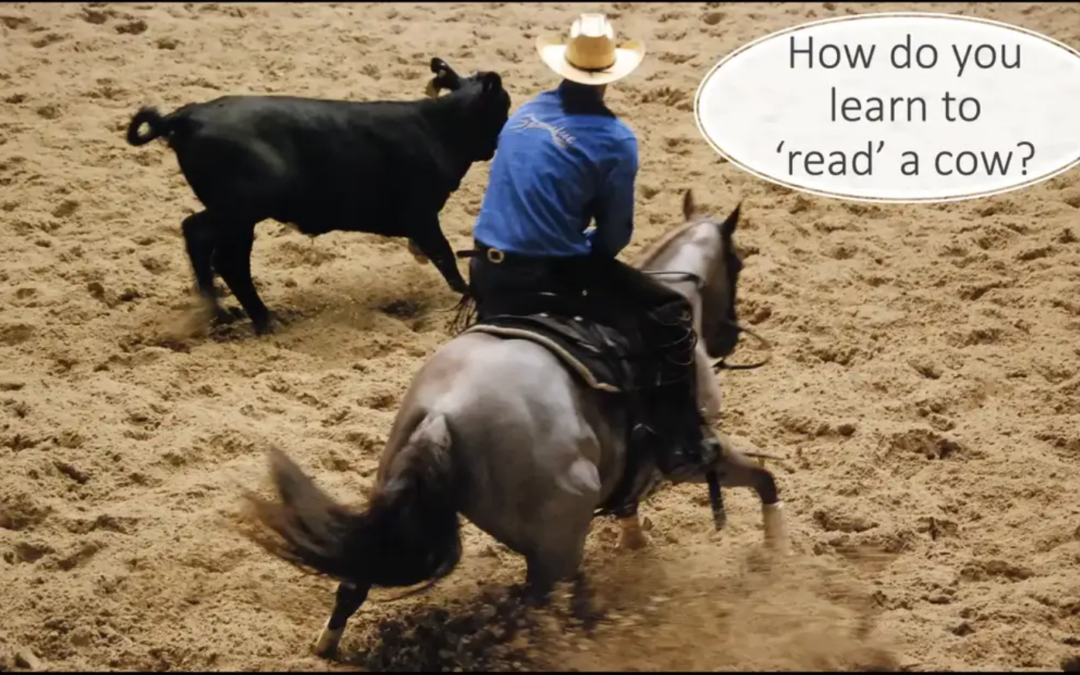
How do you learn to read a cow?
I clipped a piece of video for you from one of my “Cow Classes” in my Core Confidence class. In this segment, I talk about how to ‘read’ a cow. I also included a clip about where do you approach a cow to turn it.
LET US KNOW YOUR THOUGHTS 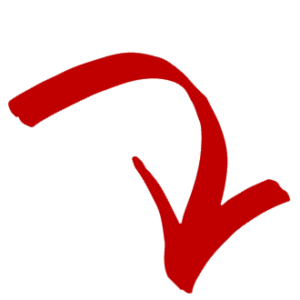
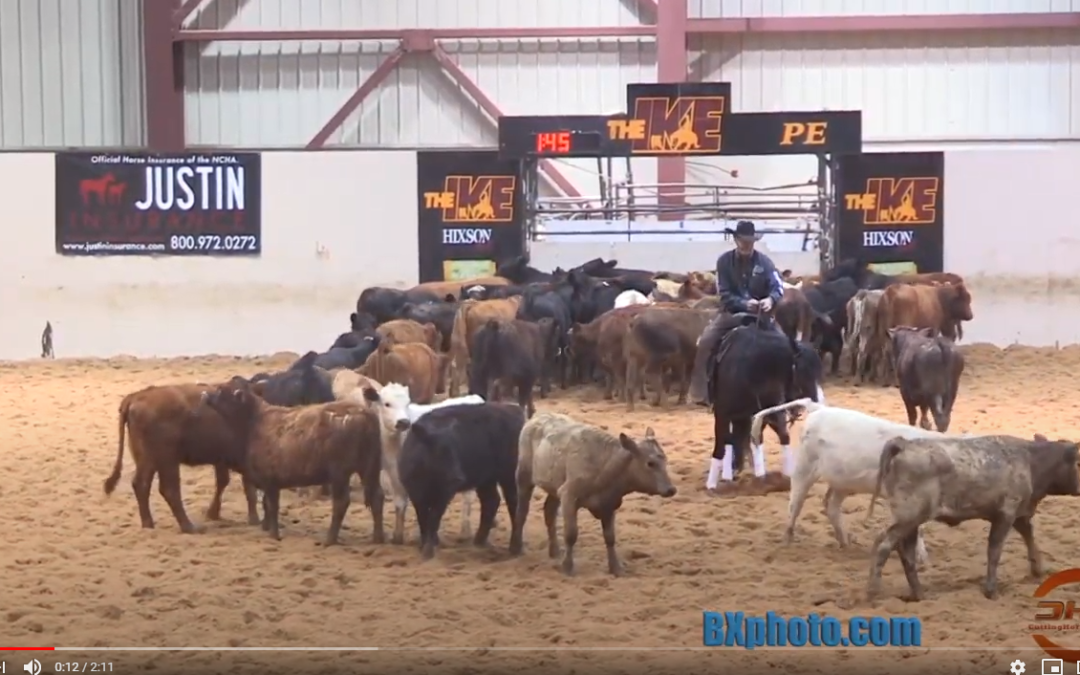
The Rhythm of Working a Cow
One challenge in working a cow, is to get all of the pieces of accuracy, form and rhythm to stay correct … no matter the speed of the cow.
This video is a great example of the pretty form and rhythm we all aspire to achieve as we work a cow. Below the video, I explain the component parts of working a cow.
Identify those pieces as you watch Lloyd Cox and Blackish work a cow.
Let’s start from the place where you and your horse are traveling across the arena, on a straight line, and in position with a cow.
You: Good position as you travel … slightly ahead of the cow … your leg in the cow’s shoulder.
Cow: Begins to slow down.
You: Because you’re reading the cow as you travel … and you and your horse are in position to stop the cow … when you see the cow begin to even think about slowing down, your seat drops to help your horse rate the cow and get ready to stop.
Cow: Stops.
You: Collapse your back and drop your seat softly down “into” your saddle as you see the cow stop. Continue to exhale and imagine your core dropping into your horse.
Cow: Still stopped.
You: Stay low. Stay down. All the while, read the cow. Sink lower.
Your Horse: His weight remains on his hindquarters as he feels you stay quiet, still and low in the saddle. He reads the cow.
Cow: Turns and goes the opposite direction.
You: When the cow first begins to turn, you stay still. Your eyes remain on the cow. There’s a momentary “wait”. You stay low as the horse pivots 180 degrees on the “line” and comes out of the turn slightly behind the cow.
You: When you get to the 180 point, you are behind the cow … again, just for a moment.
You: Now, proactively, but accurately, you accelerate your horse on the line to get into position to stop the cow.
You: Now you’re back traveling with the cow. The cycle begins again as noted beginning at the top of this list..
NOTE: The natural tendency is to do the opposite re: rush the turn when you need to wait … and not travel in position or with authority once you are traveling on the line.
LET US KNOW YOUR THOUGHTS 
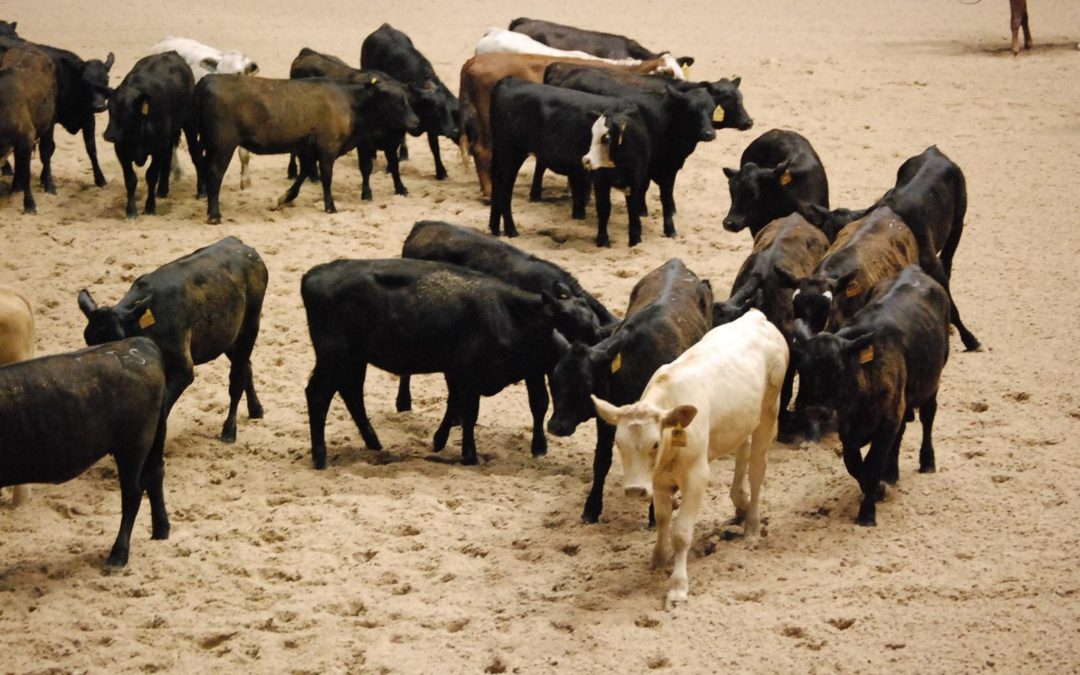
’Reading’ a ‘Good’ Cow vs a ‘Challenging’ Cow
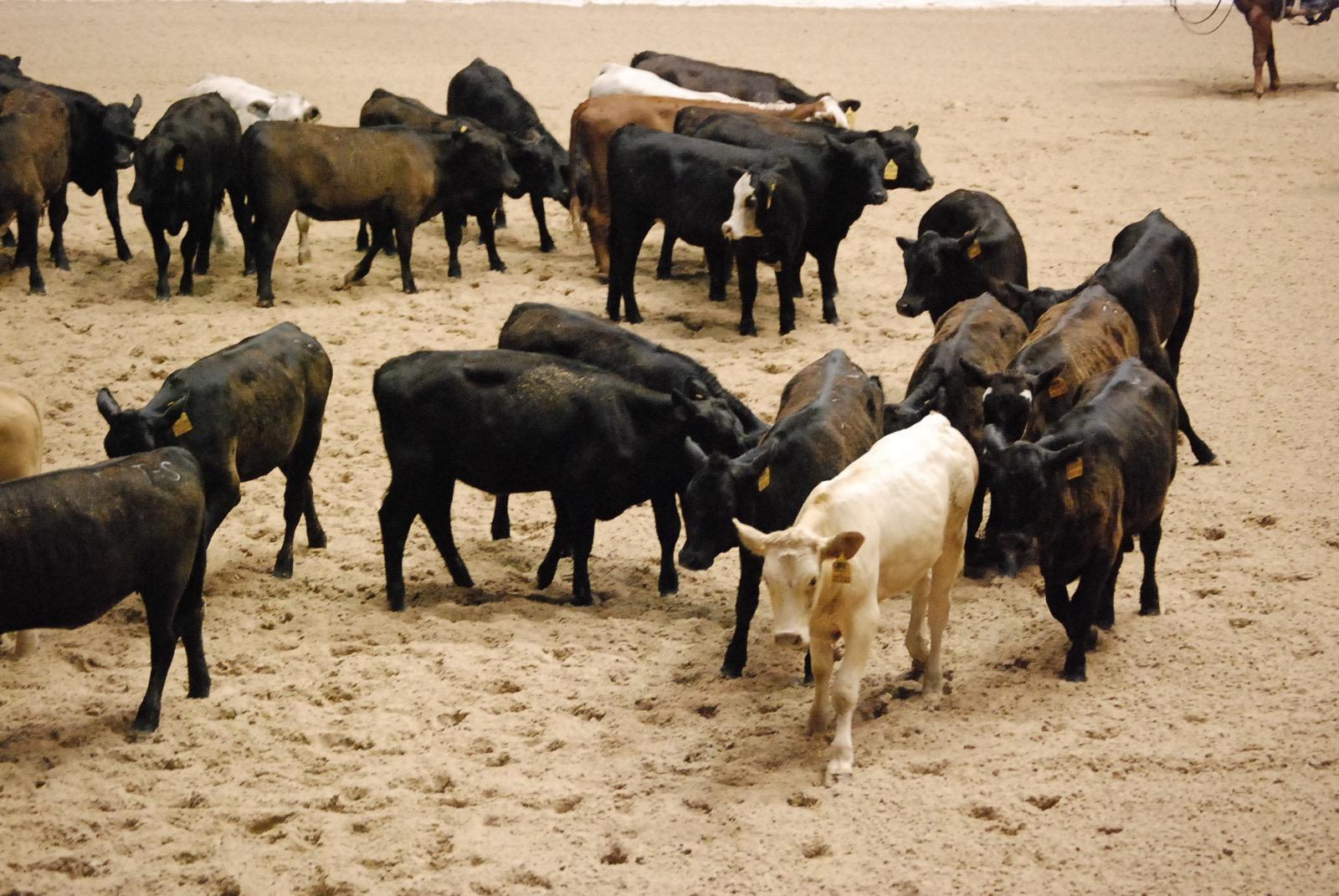
One challenge a rider has in cattle events is being able to predict what a cow will do as he or she approaches it on a horse. That ability to interpret current cow behavior as well as predict future cow behavior is called “reading” a cow. It’s a skill that takes experience, patience and time.
A productive way to learn to read cattle is by observing them whenever possible, in all kinds of situations.
This could be at a trainer’s barn or at a show when cattle enter the arena for a herd work class.
At a show, you could also walk back to the cattle pens and just observe them.
As you consistently take the time to observe cattle in different scenarios whenever possible, you will expedite your learning curve for reading cow behavior.
What follows are two categories of cattle behavior, both “good” and “challenging”. You’ll also see eight characteristics under each category.
“Good” Cow Behaviors:
1. Watching a horse (or a person) with curiosity and steady interest
2. Takes a step back when curious, and then walks off with ease
3. The head and neck stay level
4. Chews their cud
5. Walks or trots at slow to medium speeds, and then reduces speed to a slower gait quickly
6. Licks their shoulders
7. At ease standing apart from the herd
8. Consistent in stance and reactions
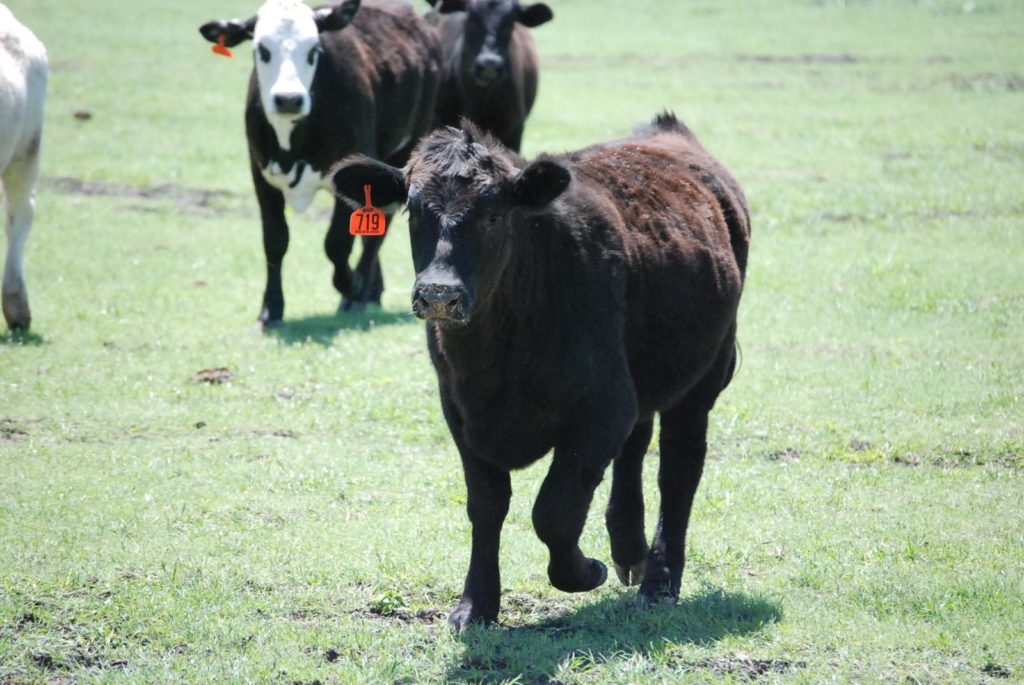

“Challenging” Cow Behaviors:
1. Head way up or down … eyes wide … ears perked
2. Moves around quickly and erratically
3. Pushes aggressively through the rest of the herd
4. Sees a horse; turns around quickly; darts away
5. Flinches/reacts to sudden movements around him or her
6. Butts or pushes other cattle in the herd
7. Glares at other cattle or a horse
8. Tail up … head up … steps high
LET US KNOW YOUR THOUGHTS 
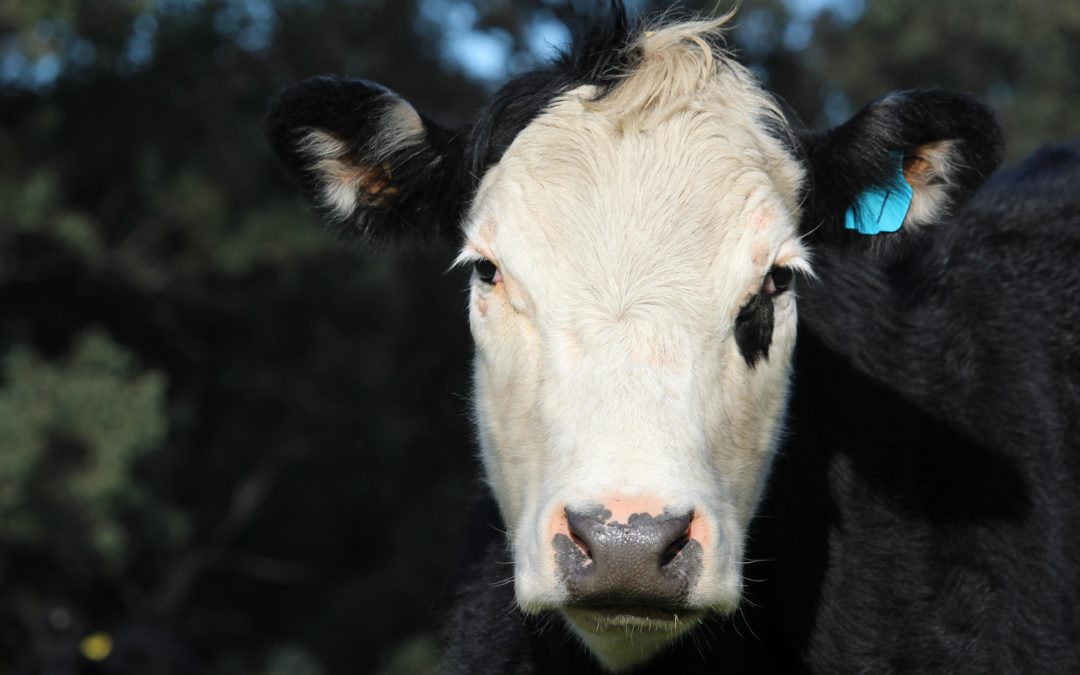
Describing Cattle, Part 1: Faces
Herd work in cutting, reined cow horse, ranch cutting, etc., always involves describing cattle.
There you are, walking your horse up through the cattle. You see cattle moving all around you. You’re trying to make sense of it all in the heat of the moment. Of course, you want to make the best decision possible.
Often times your helpers are talking to you about which cow to cut “if it works out” and which cow to avoid.
And then, when you combine your excited state of wanting to do the right thing (and not being sure) with listening to your helpers speak in what sounds like a foreign language, things can get a little hairy.
This is the first in a series of articles about describing cattle. My intention is to provide you with ways to decipher the lingo of your herd help.
In this article, I start by describing a cow’s head using these possible parameters: color, head shape, poll, ears, eyes, and distinguishing characteristics. I’m going to walk you through three different cow face examples. I’ll use whichever of our parameters most apply (as would your helpers).
Please know, too, that the language of cattle description is far from universal. Each helper describes cattle in their own way. Typically, however, most helpers begin by noting the breed and/or color of the cow they’re describing.
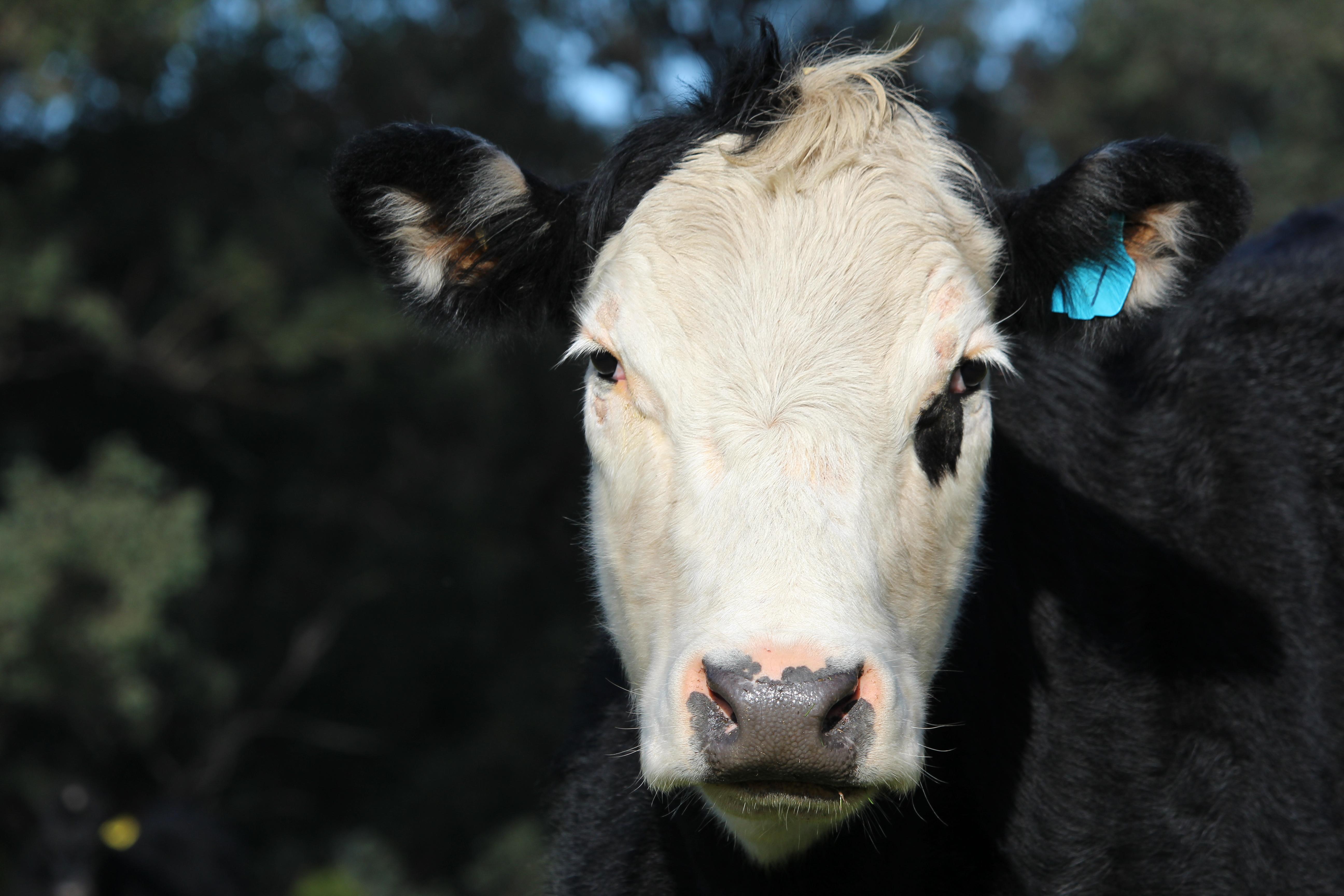
Color:
“Black baldy” … the face is all white except for the black marking under the left eye (as contrasted to multiple colors at other parts of the face, which is called “mott” or “brockle face”).
Poll:
Half white/half black … half and half “fluffy swirl”
Ears:
“Small-eared” … white in the ears (highlights) … turquoise ear tag with #1
Eyes:
Black “teardrop” (as contrasted to “rings” that encircle the entire eye) … white eyelashes … rub mark above and under the right eye
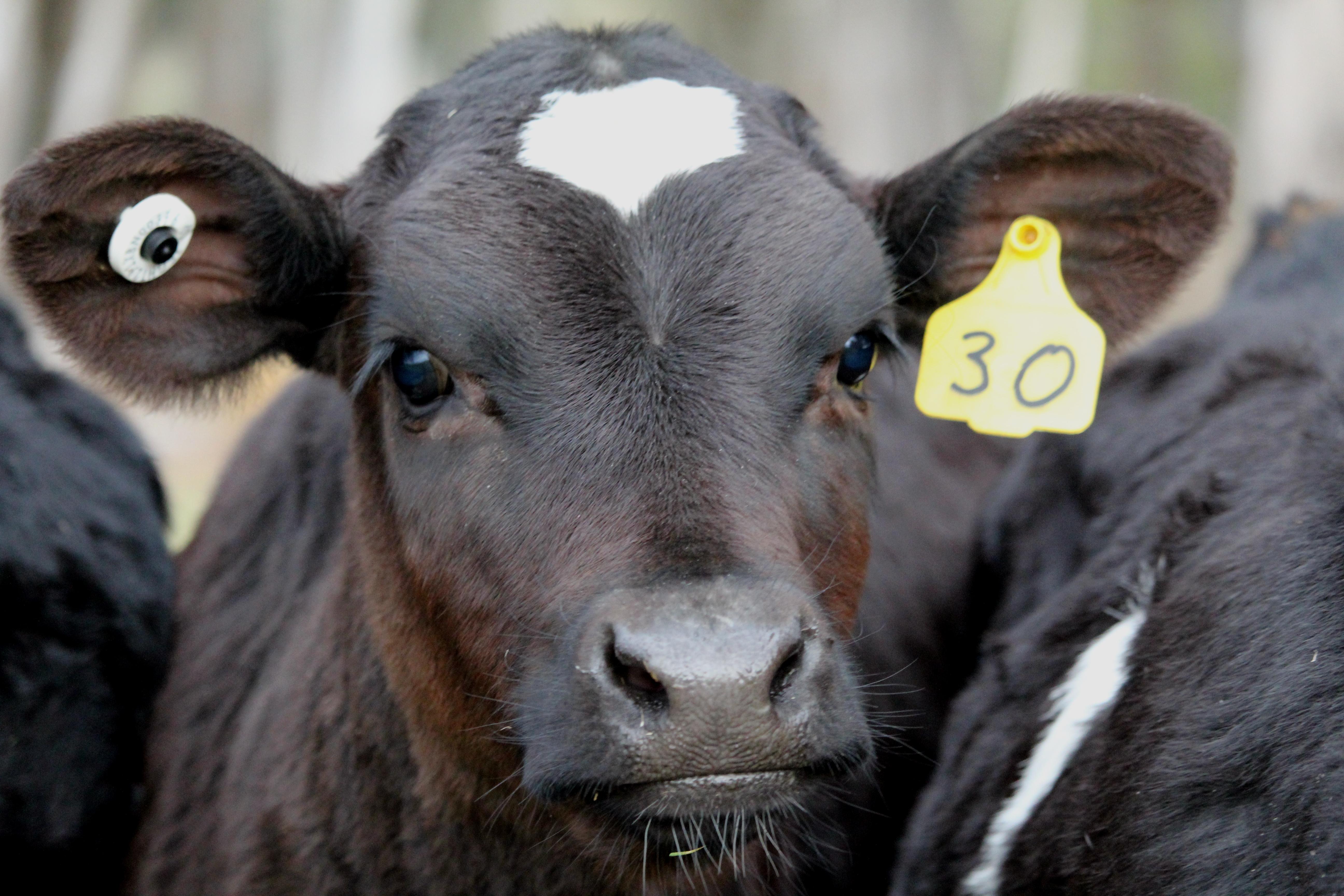
Color:
“Black mott” … medium star (referring to the size of a white shape in the forehead) or maybe heart head … also, “brown beard”
Head shape:
Small, “baby faced”
Ears:
“Airplane ears” (extend to the side) … yellow #30 tag in the left ear
Distinguishing Characteristics:
Black-nose
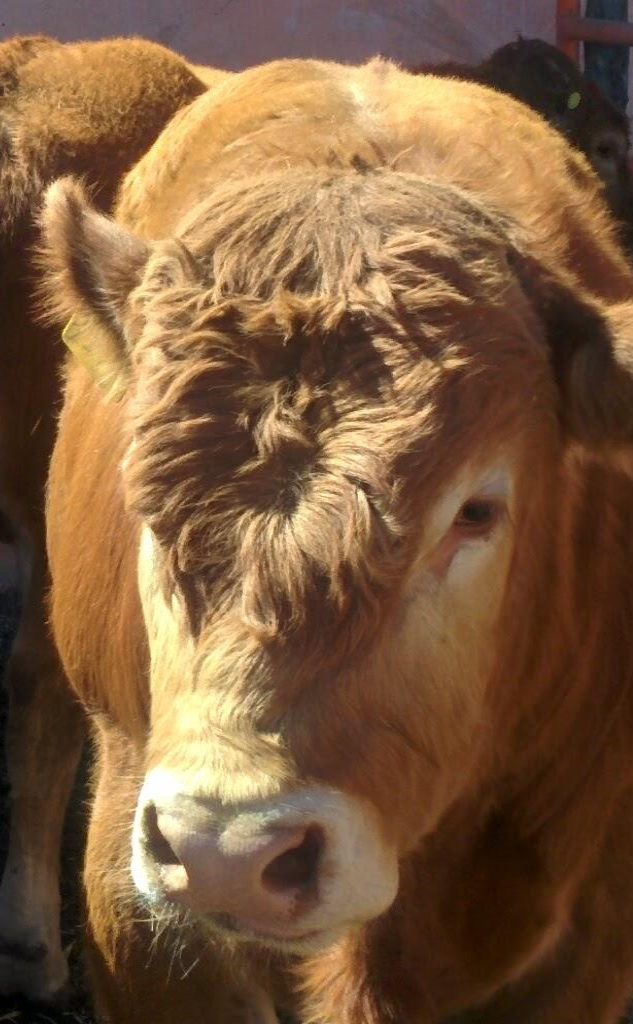
Color:
Red/Orange
Head shape:
Classic Limousin breed head shape … wide forehead … box-like
Poll:
Rounded with “bangs”
Ears:
Short
Eyes:
Light around the eyes (if you had a group of all Limousins, the rather obscure pink skin “rectangle” under the left eye might be noted to distinguish him from the others)
Distinguishing Characteristics:
Huge cow-lick/swirl in the middle of the forehead … light nose
Final Thoughts:
Describing cattle takes practice, and again, it’s not a perfect science.
I suggest that you get an order to the sequence as you describe their characteristics as noted above (breed and color first, for example) and go from there.
Have fun with this! Gather a group of friends. During the open class, for example, begin to describe cattle physically as they are being settled. Make it a learning game.
Then, if you can hear the herd helpers in the bleachers as the open riders show, listen to their descriptions, too. The more you observe and practice, the more comfortable you will become.
LET US KNOW YOUR THOUGHTS 

7 Steps for Making Good Decisions in the Herd
It’s easy to wait to hear your name called and then rely on your trainer for a cow plan as you walk to the herd.
However, I believe this is the slow road to becoming skilled in the herd.
There is so much you can do to set yourself up for herdwork success … as you collaborate well with your trainer or #1 helper.

Here are 7 steps to help you make the best possible decisions in the herd:
1. Have a plan for your herdwork. Will you cut shape, specific cattle, or both?
Be proactive in planning details. Will you watch cattle? Who will keep your horse warm? When will you get on your horse? If you cut shape, where will your eyes be?
Then there’s the universal plan for all cutters: cut your cow way up and in the middle of the arena.
2. During your warm up and/or as you practice watching cattle in previous classes, mentally rehearse scanning the cattle as you walk through the herd. This mental rehearsal will prepare you to see situations as they change as well as respond to them moment to moment during your show run.
The ability to scan the cattle by moving your head and observing the big picture of what is going on in the herd, as well as seeing the cow you want to cut, is one of the most important skills for making good decisions in the herd.
3. Set up a communication system with your helpers for the cutsprior to your run.
Who is your main person? Visit with them about things they say during your cuts that really help you. By initiating a conversation about what confuses you and what helps you prior to your run, you will set yourself up for success during your cuts because everyone will be on the same page.
4. Get into a calm and focused state of mind before you walk to the herd.
Review your herdwork plan. Focus on what you will do. Feel grounded and patient … yet authoritative. Put your chin up and shoulders back. Keep your eyes on the herd. Breathe.
5. On each cow, enter the herd with purpose. Know where you are going and why you are moving in a specific direction before you enter the herd on each cut.
Remember to pause, breathe and take time to do regroup and re-focus before your 2nd and 3rd cuts. It’s easy to feel mentally sped up after working a cow.
Always enter the herd with purpose. Resist the tendency to just start walking and then decide what to do.
6. Walk through the herd with patience and purpose as you continually scan the cattle to evaluate how the situation is shaping up moment by moment.
Scanning allows you to see and take advantage of opportunities to drive your cow way out, up and to the middle of the arena. Scanning is the master skill of making good decisions.
7. Get re-grounded between cattle.
Have a routine between cattle. Quit with smooth hand motions. Turn your horse slowly. Pause. Breathe. Decide what your next move will be. And only then, continue on.
LET US KNOW YOUR THOUGHTS 
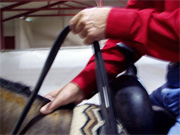
When to Quit!
If you cut, or do herd work in reined cow horse, or do ranch horse cutting, the nature of those classes is that you have to make moment-t0- moment decisions.
There are no pre-set patterns or courses. You hold the reins. You have to make on-the-spot choices.
This makes these classes exciting … and often frustrating.
One of these crucial decisions is when to quit a cow and go for another. Part of your decision making will depend on your ability to understand cattle.

Here are a few of the things you can weigh when you decide to stay with or quit a cow:
-
Is your “good” cow maximized … that is, did you get all the credit-earning work out of her yet?
-
Is your “mediocre” cow worth staying on?
-
Is the cow you cut so “bad” that the only smart thing to do is quit and get another one?
Let’s begin with a description of an ideal cow.
It faces your horse and goes back and forth for 15-30 feet at a medium clip in the middle of the arena. It has “feel” which means it stops and goes the other direction when you ride your horse to the correct position to stop her.
Our “wonder cow” never darts toward the turn back people, the herd holders, towards the back fence or towards the ends of the arena.
These behaviors in all in one cow during a cutting or herd work class are rare, but they serve as a great references for deciding when to quit.
Okay, with those ideas in mind, here are the most common cow behaviors that should be red flags that it’s time to look for a place to quit and get another cow.
This list does not discuss the multitude of situations that also affect your decision at any moment in time, (like how much time you have been working it, or how much time is left on the clock, etc).
That’s a discussion for another day. This list is meant to be a simple set of key indicators about when a cow is probably “used-up”. Her best stuff is gone … if she ever had it!
I also understand you have to work a cow until you can quit it legally.
For the purposes of this discussion, I am assuming you will wait until a legal opportunity is available to you.
With “ideal cow” behavior understood, here are some red flags for when it’s time to quit a cow and go for another:
1.) She starts off well, but darts hard towards one of the corners. The key word here is dart. You can bet the next time she travels back in the same direction, she will try even harder to get to the corner.
She’s no good. Do your best to stop her and quit working her as soon as possible.
2.) She has no interest in your horse. She wanders from one place in the arena to another … everywhere but in the vicinity of you and your horse.
She may or may not be that “bad”, but without you being able to really affect her behavior and stop her, you won’t be able show much of what your horse can do.
3.) She is numb. She stands there and your turn back helpers are yelling and slapping their chaps. She barely moves.
Quit.
4.) She is crazy! Her tail goes up and maybe over her back. She is on a mission to go anywhere at jet speed and get by any horse she can.
She might aim at the turn back horses or just run wildly around the arena.
Quit working her ASAP. If she is super wild and you keep working her, even if she’s not coming in your direction, chances are she’s going to turn on you sooner or later and mow you over!
5.) She starts off like our ideal cow, but then starts moving in any direction out of the middle of the arena.
Quit at an opportune time. She may not be that bad, but chances are you’ve gotten all of the good work out of her and she’s not coming back to center stage.
6.) She starts running from wall-to-wall.
It’s time to quit.
7.) She starts trying to get through the turn back helpers.
Thumbs down.
8.) She snorts at you!
Adios, amigos! Quit ASAP.
A great way to practice knowing when to quit is to watch cattle from the bleachers in as many classes as you can. Study how cattle behave. Pretend like you are showing.
When does her behavior change and when would be the most ideal time to quit?
LET US KNOW YOUR THOUGHTS 
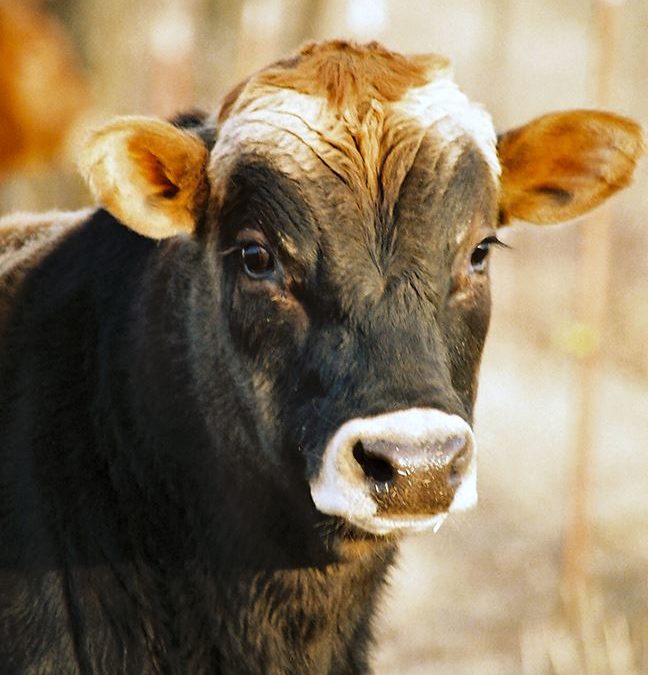
Tips on Cattle Characteristics
Barb and I have spoken a lot about reading cattle and watching them settle, etc. However, in the reined cowhorse event, we don’t get to choose our cow. So our surveillance techniques become more general, trend seeking vs studying individual cattle traits.
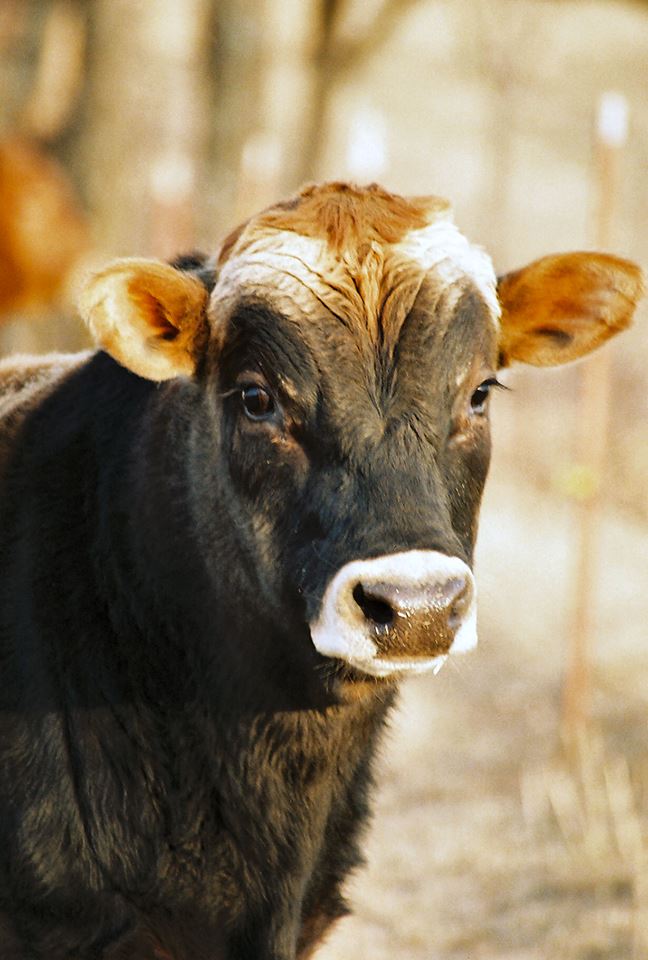

I’d rather see Cowface #2 come through the gate for me as it ‘s lowered head and floppy ears make it seem a more relaxed, workable sort. Cowface #1 looks a bit too bright and feely…..but they both could be fibbing!
The difference in how we respond to their reactions to us, can be the difference in whether we make a bad cow good or a good cow bad!
Be sure to watch the cattle before your turn, for general trends in the cattle that day.
Most groups of cattle contracted for a show, are similar breed, age, condition and sex. It’s helpful to know if they’ve been out in the mountains, in which case, they haven’t been disturbed by many horses. They might be a bit more flighty, and in much better condition to run longer and harder, than ones kept in a feedlot. Feedlot cattle might be duller, having been bumping into each other all the time, and being ridden through regularly. The mountain cattle probably have a bigger bubble than their feedlot friends.
By bubble, I mean, how big the area around a cow is before they feel compelled to react to a horse’s intrusion.
A wilder cow, with a bigger bubble, will respond to a horse that’s further away, in a quicker more reactive manner. If you misread a cow’s bubble, by stepping up too quickly, and create a bad reaction (ie their head and tail come up, ears are no longer drooping and relaxed, and they squirt across the arena), don’t panic. Just take your foot off the accelerator pedal, back off a step and recalibrate. Slow everything down, and approach in a softer, slower manner. Be prepared to play defense on these kind.
Every cow is an individual with their very own personality, so it’s essential to become a “student of the cow”. A good cattleman doesn’t see a large group of black cattle that all look the same. They see many cattle with unique characteristics, and each will respond differently to a horse.
There’s a really big difference between working steers and heifers too. Steers tend to be more docile, get fat more easily, tire more quickly, and might quit you when they do tire. Heifers, on the other hand, tend to be quicker, faster and get on the prod (mad) more readily. But, I’ve seen steers that could run all day, and heifers that I could outrun on foot….so there you go!
Another character trait most cattle have, is if they get away with something once, they will try the same thing again, usually in the same place. So, if they slip by you, or beat you in a turn, be prepared for them to try it again. If they set up quick when you’re boxing (in other words, stop and change directions before you actually get in position), then be prepared for them to turn on the fence, before you actually get them headed.
So, let the open class be the test pilots. Watch them go. It might make you nervous to see how fast they go, or to think of all the things that might go wrong. But, knowledge is power. The more familiar you are with what you’ll be working, the better your game plan will be, and the calmer your nerves will become. Having a Plan A, B and C, and the ability to shift from one to another seamlessly, is a big confidence booster.
Those riders who put in the extra time and effort to study cattle for sure have a little leg up on those that don’t.
LET US KNOW YOUR THOUGHTS 
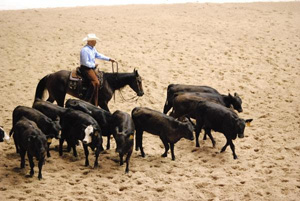
What to Look for in a Good Cow
Perhaps you are an amateur or a non-pro who did not grow up around cattle … and now you still don’t have many opportunities to be around them or work them. You’re not alone.

